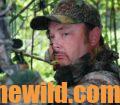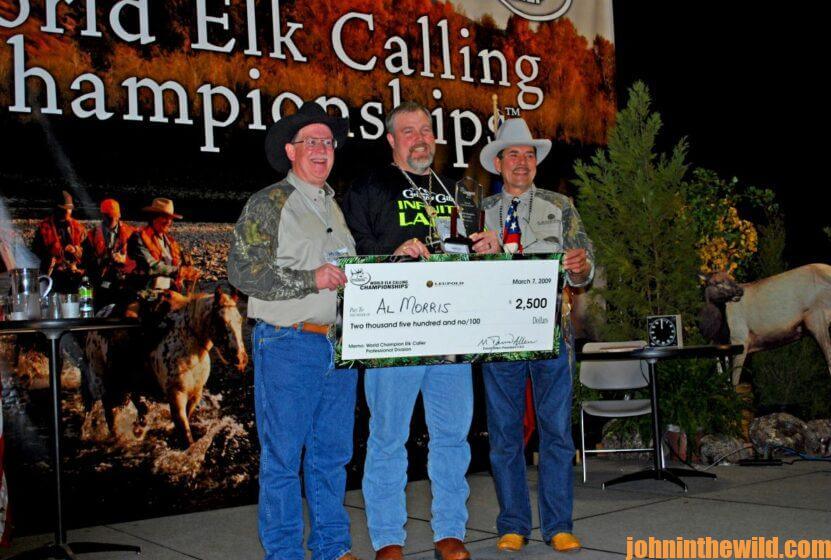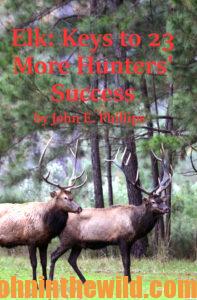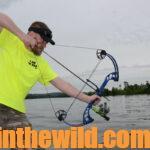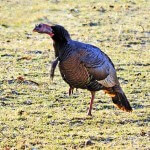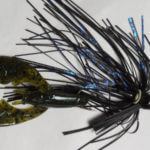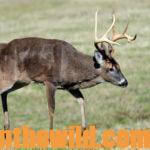Editor’s Note: My friend Al Morris of Springville, Utah, won the World Elk Calling Contest, and he and his partner Garvin Young also are coyote-calling champions. Morris and Young were in Utah assisting Kenyan Davis in filling his bull elk tag.
 I was hunting in Utah for the beginning of rifle season one year in September at the Book Cliffs, part of the East Tavaputs Plateau near Green River, Utah, with my friend Kenyan Davis. My buddy Garvin Young was filming the hunt, and I was doing the calling. This hunt was important to me, because this was the spot where I’d scattered my dad’s ashes. Forty years ago, my dad and I were sitting on our horses here on the Book Cliffs, and my dad looked at me and said, “Son, when I die, I want my ashes scattered in that little meadow right there.” When he passed away more than two decades ago, that’s where I scattered his ashes.
I was hunting in Utah for the beginning of rifle season one year in September at the Book Cliffs, part of the East Tavaputs Plateau near Green River, Utah, with my friend Kenyan Davis. My buddy Garvin Young was filming the hunt, and I was doing the calling. This hunt was important to me, because this was the spot where I’d scattered my dad’s ashes. Forty years ago, my dad and I were sitting on our horses here on the Book Cliffs, and my dad looked at me and said, “Son, when I die, I want my ashes scattered in that little meadow right there.” When he passed away more than two decades ago, that’s where I scattered his ashes.

We’d hunted for 4 days without locating a really-big bull. But Kenyan’s dad rode up a ravine and found this bull. The next day, when the bull bugled, I kept him bugling with my two diaphragm calls until we could get a look at him. We had to hike for 3-1/2-hours to finally reach a spot where we could see the bull. Throughout the hike, we occasionally would stop and spray-down with Scent-A-Way (https://www.hunterspec.com/product-category/scent-control/). As we closed-in on the elk, one of the cows in the herd spotted us and took-off running, taking the herd about 1/2-mile up the mountain. Luckily for us, because she didn’t smell us, the elk stopped within 1/2-mile. If she’d smelled us, our hunt would have been over. If an elk sees movement and doesn’t know what the movement is, it may run a little distance and then stop. But if an elk smells you, you may as well tell that elk adios.
As soon as that cow broke to run, I started calling like a calf and giving some cow mews to convince the cow we’d spooked that perhaps she saw another elk instead of a hunter or at least to put a question in that elk’s mind, so that she wasn’t really sure what she saw. We got within 300 yards of the elk when we decided to take the shot. Because the bull hadn’t seen what the cow had seen and because he heard
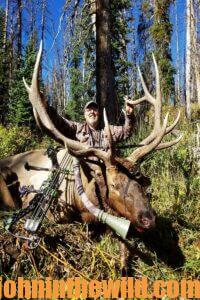 cow and calf sounds coming from the spot where we were located, he kept inviting us to join his herd by bugling almost constantly. We further confirmed that we were cows and not hunters by continuing to walk toward the bull, as though we were cows and trying to catch-up to the rest of the herd. Since we were rifle hunting, we weren’t trying to get really close like we would if we were bowhunting. By using diaphragm elk calls, we weren’t only able to keep the bull calling to us and listening to us come home, we were able to position him for a broadside shot that Kenyan would take later.
cow and calf sounds coming from the spot where we were located, he kept inviting us to join his herd by bugling almost constantly. We further confirmed that we were cows and not hunters by continuing to walk toward the bull, as though we were cows and trying to catch-up to the rest of the herd. Since we were rifle hunting, we weren’t trying to get really close like we would if we were bowhunting. By using diaphragm elk calls, we weren’t only able to keep the bull calling to us and listening to us come home, we were able to position him for a broadside shot that Kenyan would take later.
Earlier on this same hunt, using two calls, I’d called-in five other bulls at one time to within less than 100 yards of us. We were able to video three of the bulls at the same time. I was able to pull all those bulls in by using an estrous cow call. Those bulls really got fired-up and started bugling. All five of the bulls we called-in were over 300 inches and would have scored from 300 to 330 inches on Boone & Crockett (https://www.boone-crockett.org/). However, we had our sights set on a bigger bull. Most hunters happily
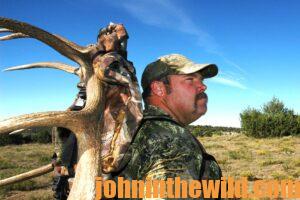 would have taken any one of those five bulls, but Kenyan had tried for 16 years to draw this area, so he wasn’t going to take just any bull. We only had 5 days to hunt.
would have taken any one of those five bulls, but Kenyan had tried for 16 years to draw this area, so he wasn’t going to take just any bull. We only had 5 days to hunt.
Those five bulls came in on the fourth day, but Kenyan made the decision to hold-out for a bigger bull, even if it meant he wouldn’t fill his tag. That’s often a decision you have to make when you’re hunting for trophy elk. I have two theories about hunting: don’t pass on an animal the first day that you would have taken on the last day; and if you take the first little average bull that comes by, you’ll never take a big trophy bull elk. If you want to take a really-big bull, you have to weigh those two options.
Odor neutralizers played a major role in our ability to find the elk and take the big bull we took. We rode horses into the mountains, but we’d get off the horses and start walking. When you’re walking, you’re constantly perspiring. Without odor neutralizers, we would have spooked most of the elk we saw. When the five bulls came in, we were within 100 yards of those elk, and the wind was swirling. But none of those bulls seemed to know we were in the area. When Kenyan finally took his bull, the bull was raking a tree with his antlers. Kenyan took the shot at 300 yards and double-lunged the bull. The bull dropped. This hunt was great, long and memorable.
To learn more about hunting elk successfully, check out John E. Phillips’ book, “Elk: Keys to 23 More Hunters’ Success,” available in Kindle, print and Audible at https://www.amazon.com/gp/product/B09B2H9V6Y/ref=dbs_a_def_rwt_hsch_vapi_tkin_p1_i2.
You may have to copy and paste this click into your browser. When you click on this book, notice on the left where Amazon allows you to read and hear 10% of the book for free. On the right side of the page and below the offer for a free Audible trial, you can click on Buy the Audible with one click.
Tomorrow: Learn Wolf Hunting Tips for Elk Hunters

